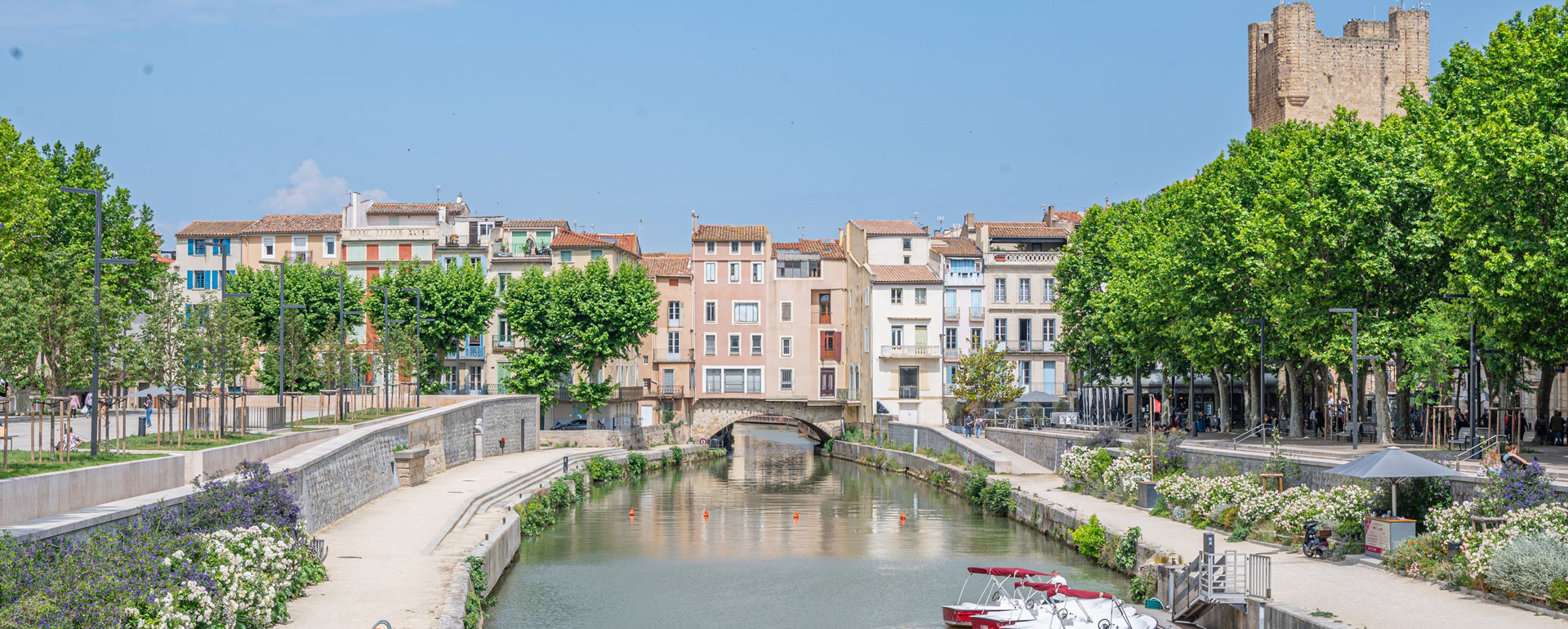
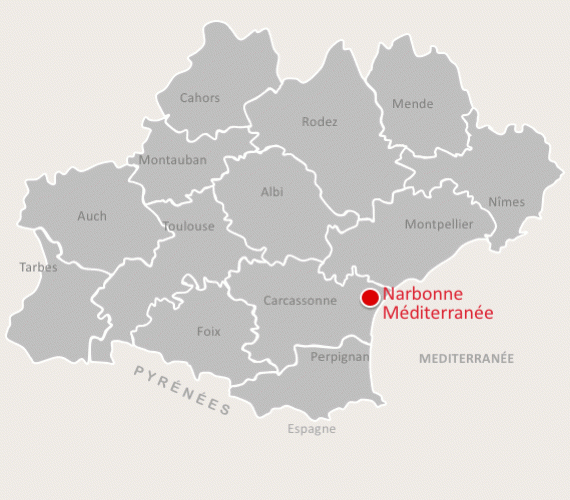
Narbonne (Narbo Martius from its Latin name), founded in 118 BC, was the first, and one of the richest, Roman colony outside Italy. It preserves a real treasure: a piece of the Via Domitia, well highlighted, which you will discover in the center of the city.
Then head to Narbo Via, the museum dedicated to the origins of the city, opened in 2021. Designed by the agency Foster + Partners on the initiative of the Occitanie region, this museum has a collection of nearly 10,000 pieces. It offers an exhibition of 2,600 m 2, with remarkable wall paintings discovered at the Clos de la Lombarde (a Gallo-Roman domus discovered during archaeological excavations in the city centre of Narbonne) and an exceptional set of 760 burial blocks.
The existing sites of the Roman Horreum in the center of Narbonne, and of Amphoralis "the village of the Gallo-Roman potters" in Sallèles-d'Aude are associated with Narbo Via to form a major pole of ancient history in the South of France.
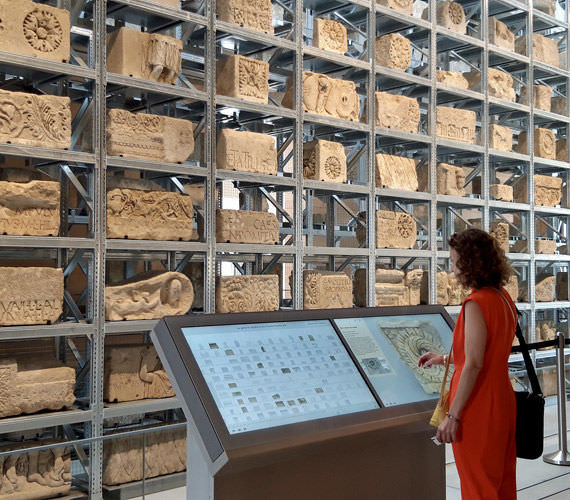
Narbo Via museum
Travel by train
Discover Narbonne by train, with the Occitanie Rail Tour, on Canal du Midi line.
If you want a sight for sore eyes then go up 170 steps to the Gilles Aycelin Keep. From the terrace you can see the Tour Saint-Martial, Gothic Narbonne Cathedral, its Saint-Pasteur cloister and the Archbishop's Palace.
Go back down and wander through the picturesque Passage de l’Ancre, admire the Cour de la Madeleine and visit two great museums: the archaeology museum in the Palais Vieux and the art and history museum in the sumptuous Palais Neuf which was once home to Narbonne's bishops.
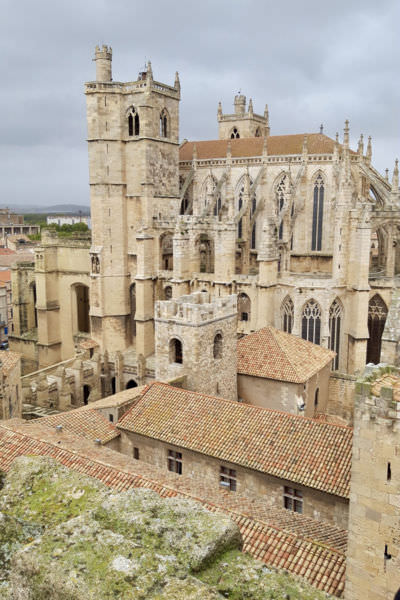
Narbonne
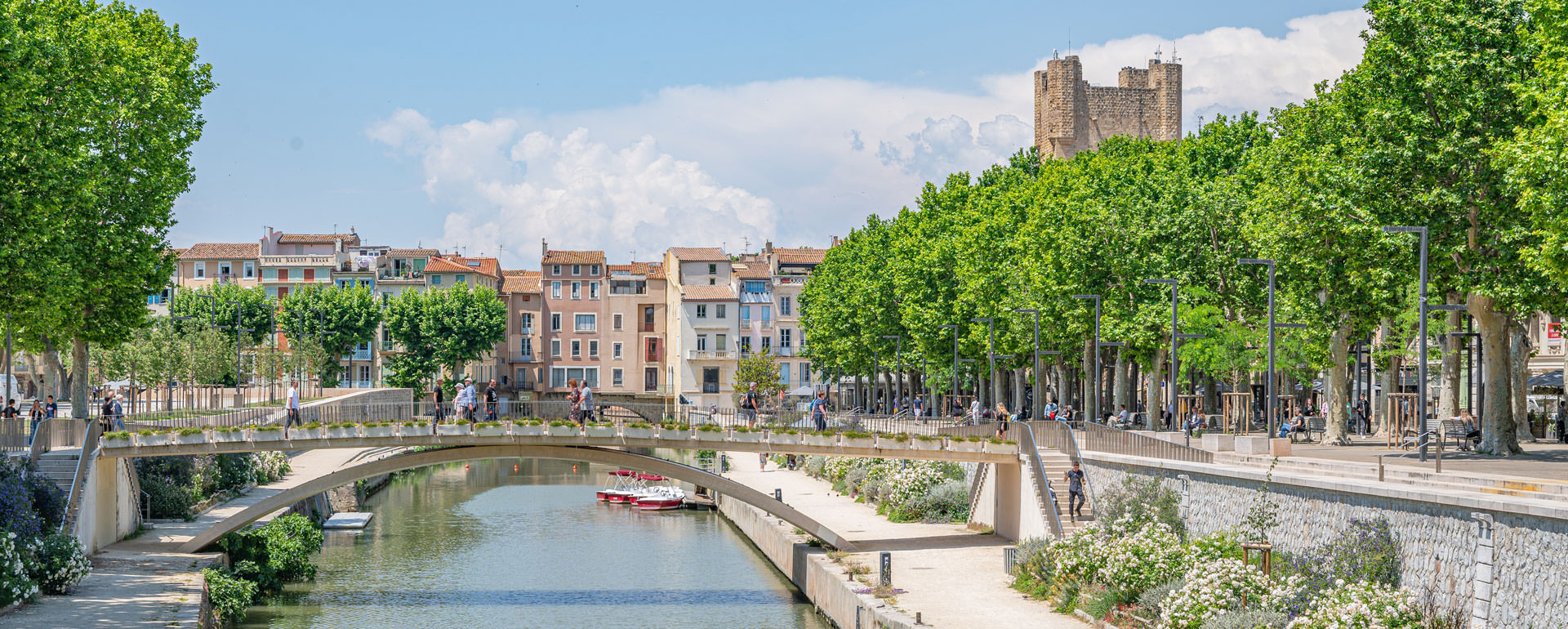
Take a bike or rent a small boat in Narbonne to explore the UNESCO Canal de la Robine. It takes the Aude's old bed through Narbonne past the Bages and Sigean lakes then into the Ile Sainte-Lucie Nature Reserve. It spills into the Mediterranean at Port-la-Nouvelle.
Lined with umbrella pines, the Canal de Jonction runs through Sallèles-d’Aude and links with the Canal du Midi that passes north of Narbonne. Hire a bike or permit-free boat in Narbonne.
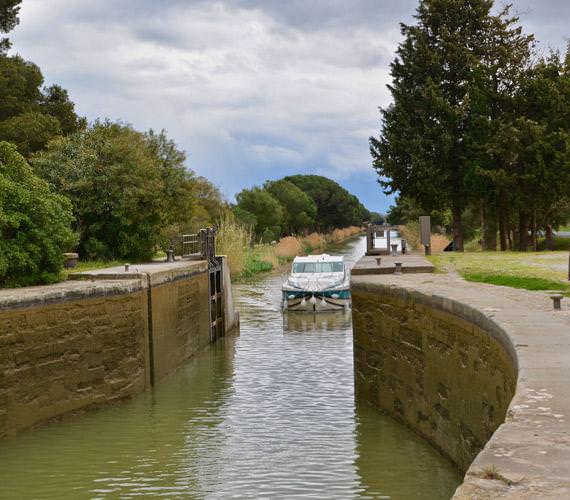
Le Canal de Jonction
Bon plan
The beaches are within 30 mins of Narbonne: Saint-Pierre-la-mer, Narbonne-Plage, Gruissan etc. To get there, go through the listed Clape Nature Site in the heart of Narbonne Regional Nature Park where the outing possibilities are endless.
Lying 25 mins from Narbonne on the Canal du Midi, the port of Le Somail hasn't been touched since it was founded by Pierre-Paul Riquet in the 17th century.
Le Somail was a place for travellers to take a break. They'd spend the third night here on their way from Toulouse. The former warehouse docks make for lovely terraces on the towpath just steps away from the old hump bridge, chapel, inn and very popular old bookshop.
Maison Bonal is home to an exhibition centre about the Southern French canals.


The abbey of Fontfroide
1000 years ago, monks chose to build their abbey in this Corbières valley 20 mins from Narbonne. It was incredibly wealthy until the French Revolution before being abandoned but Fontfroide Abbey was restored to its former glory in the early 20th century when it was bought by Gustave Fayet. His descendants have made it a beacon surrounded by vineyards that you can now visit. From spring to autumn, Fontfroide has a packed schedule. Orchid festival, medieval event, Music and History Festival run by Jordi Savall, exhibitions and more.
Narbonne is a stop on the Occitanie Rail Tour, on the Mediterranean line and on the Canal du Midi line: also discover our ideas for stays to book, from Narbonne station.
Our suggestions

How to get there
Your itinerary with